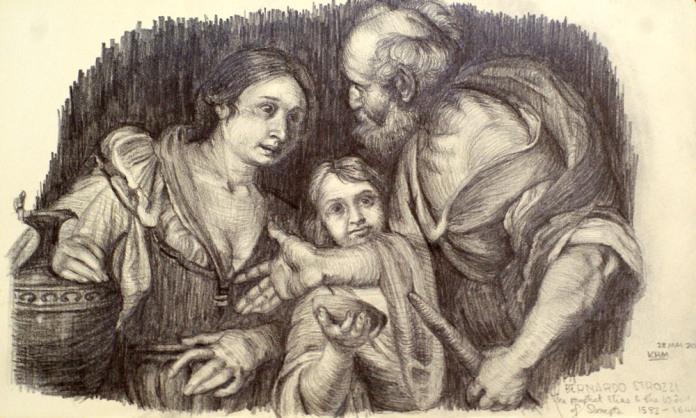
Copy after Bernardo Strozzi, The widow of Sarpeta with the prophet Elias
I’m suspicious of dichotomies of the likes of Romanticism(s) versus Classicism, and I’ve no intention of defending such categories here, though I’ve been reading much literature on the topic. Where the definitions of Romanticism and Classicism are themselves individually contested, and individual artists are argued to fall under both titles, it seems difficult to gain anything of substance from the division. At best, I can see that broadly, some artists strove for a universalisable, eternal method in art, ‘so simple that their universality could be deemed self-evident,’ (Barzun, p. 24). Other artists broadly reacted against this, often responding to the multiplicity in nature. What follows assumes this very simplistic definition.
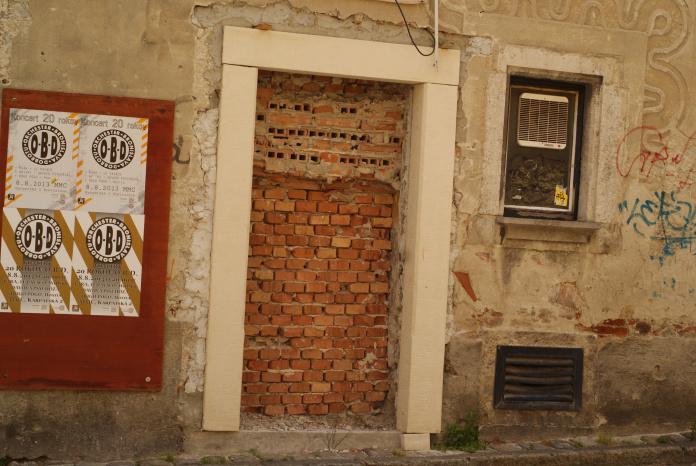
Bricked-up door, Bratislava
In fact, I want to argue against the hard division, which seems to do more intellectual damage than good. As an artist and art lover, it has always been the so-called ‘romantic’ art—sublime hillsides and vast skies of Caspar David Friedrich, emotive colour and heady composition—that has won my deepest affection. As a philosopher and thinker, reason and analysis must underpin everything. It seems to me that the two need not exclude each other, as is so often simplistically asserted. Profound emotional experiences can direct our systematic thoughts; just as our bodies ache and thrill as guides for our minds, our emotions and passions give our intellect cues. To reject such indicators as invalid is an unhealthy denial of the self; to fail to probe them with the mind is short-sighted and disengaged. We are sensuous creatures, dependent on our senses for basic functions and reliant on them for information; art takes this sensory experience to a higher plane that gives our minds a way in to thoughts of a very different quality.
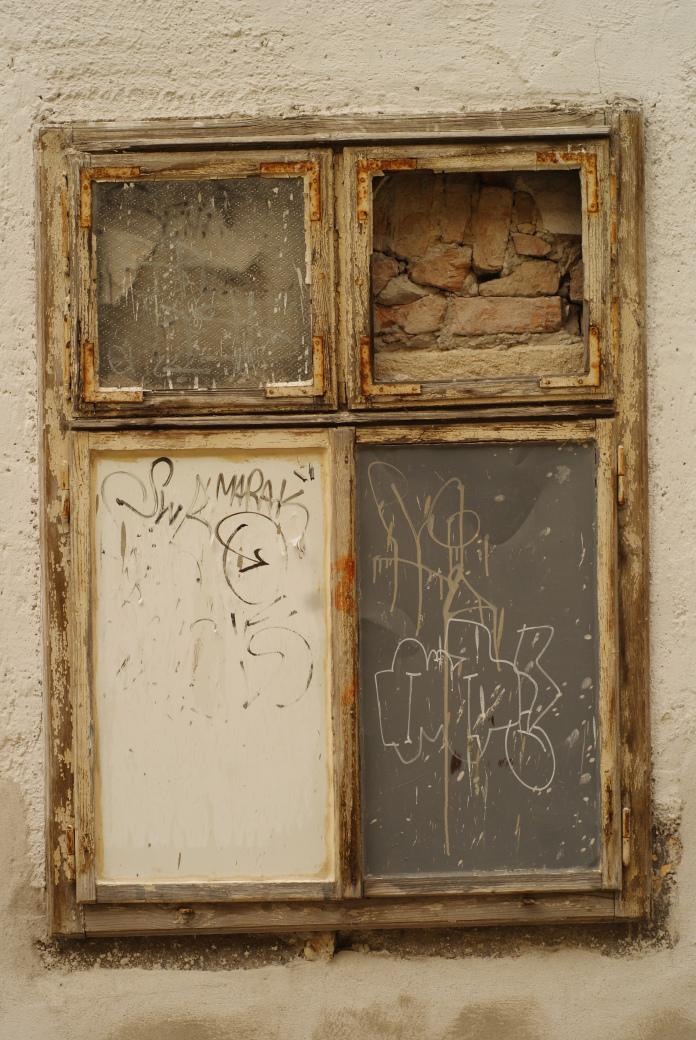
Bricked-up window, Bratislava
It troubles me, then, to read the praises of thoughtless naïveté, passions disconnected from thought, as though thought might actually ruin the sensation rather than amplify it through intention and understanding. Babbit (p. 15) refers to the naiveté of Romantic artists whose ‘spontaneity and unity of feeling had not yet suffered from artificiality, or been disintegrated by analysis.’ Surely only shallow feelings dissolve at the airy touch of thought? Surely it is one-off performances that prove false when gazed at squarely? The fleetingness and transience ascribed to Romantic art attempts to paint it as a wholly ungrounded discipline, mere lucky snatches at inspired impulses, never to be explained, understood, or repeated. Clark (p. 263) worryingly calls such miraculous occurrences, ‘like all romantic arts, … a triumph of the irrational.’
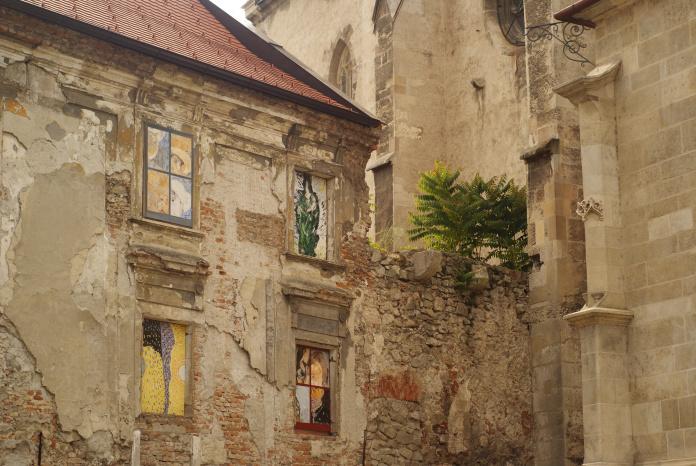
Van Gogh windows, Bratislava
The very accidental nature of such performances makes me question their value. Is the lucky slug of a beach-cricketer who hits it for a six more inspired than the precision of technique of a skilled batsman? Is the feeling of surprise-based elation in that moment more meaningful than the pay-off of solid hard work? And, further, is the magic of the flight of the ball destroyed by a scientific understanding of trajectories and friction? The scientist would vehemently argue that understanding makes the observation more profound. Perhaps the art-viewer would be more moved by having an intellectual grasp as well as an emotive connection to a work of art. And perhaps the artist herself is more invested in and expressive in a work of art in which she has demonstrated some intentionality rather than working mindlessly, purely physically.

Plumbing windows, Bratislava
Barzun (p. 26) argues contrary to Clark: ‘It is a fact beyond dispute that the romantic artists worked like scientific researchers. Their notebooks,’ he continues, ‘their critical writings, their letters and treatises on composition are there to testify that technique was to them as important as subject matter.’ Should Turner be offered as a fine specimen of romantic artist, I would question the free, unthinking irrationality attributed to him by the likes of Clark (p. 255; 259), who in the same breath describes Turner’s long-term project of understanding colour as both ‘an unthinking response to sensuous delight’ and a ‘determined effort to master the theory of colour.’ The continuity in Turner’s approach to colour exhibits a methodical application rather than a mindless splattering of paint. If anything, his ‘response to sensuous delight’ is all the more apparent because he has thought through his sensations, and how one might represent them, rather than leaving it to chance. Analysis of the tracts of Italy before his eyes allowed him to produce the colours that he did, just as such analysis by the viewer deepens the experience of viewing these paintings. Nice colours stimulate three-year-olds. Meaningful colours speak volumes to those who have felt the languid Italian sunshine warm their skin and watched it melt into the hills before them.
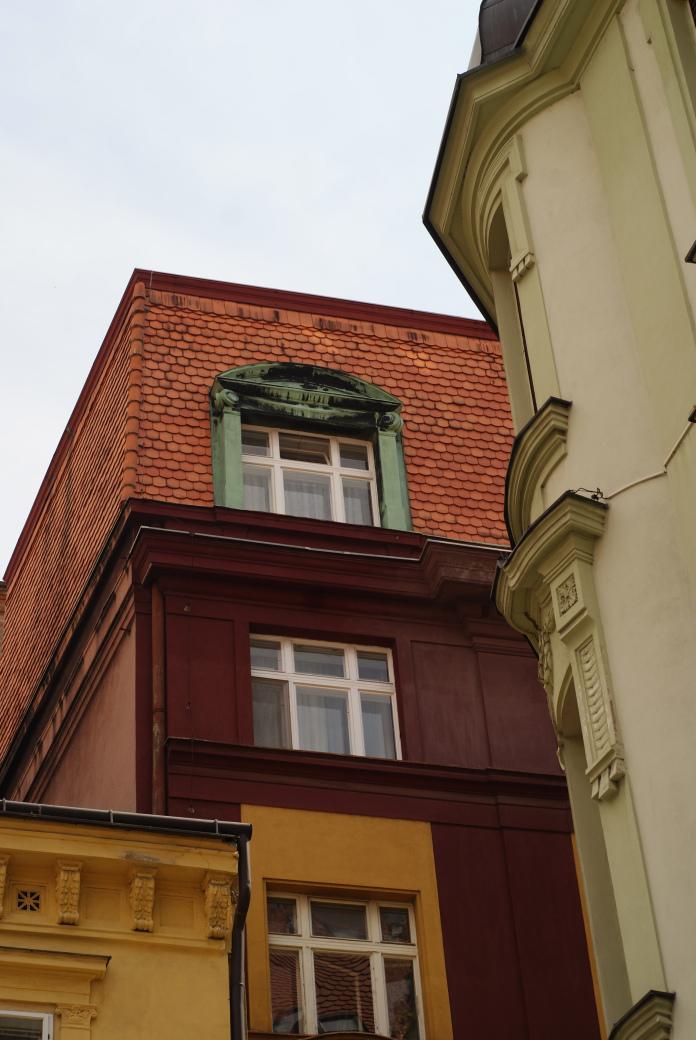
Colourful windows, Bratislava
In Barzun’s (p. 26) words, ‘Romantic art, then, is not “romantic” in the vulgar sense, but “realistic” in the sense of concrete, full of particulars, and thus congenial to the inquiring spirit of history and science.’ Barzun finds thought—philosophy, if you will—the bridge between art and science. An artist, moved by sensations, grounded in the physical world, may apply his analytical mind to very real, chemical and spatial problems and produce, wholly intentionally, a representation that moves the viewer through her sensations. The onus is on the artist once more to do the hard work, rather than the viewer to interpret the obscure accompanying statement. Barzun (p. 27) praises the energy of the Romantic painters, stating that ‘energy was not merely a cult but a fact. … All this means work if it means nothing else.’ And the analytical romantic, compelled to inquiry by the profundity of her physical sensations and the emotional responses they inspire, is not afraid of such work, and not so far removed from the intellectual impulses of the classicist.
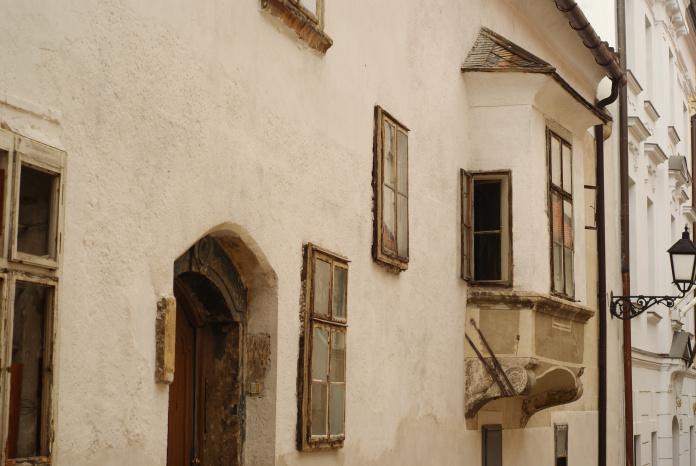
Random windows, Bratislava
Barzun, Jacques. 1965 [1961] ‘Intrinsic and historic romanticism,’ inRomanticism: Definition, explanation and evaluation. Ed. John B Halsted. D. C. Heath: Lextington, Massachusetts.
Clark, Kenneth. 1973. The Romantic Rebellion: Romantic versus classic art. John Murray: London.
Babbitt, Irving. 1965 [1919]. ‘The qualities of Rousseauism,’ inRomanticism: Definition, explanation and evaluation. Ed. John B Halsted. D. C. Heath: Lextington, Massachusetts.
